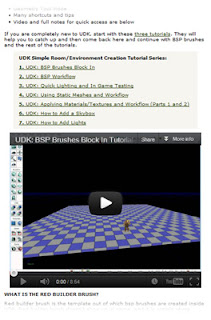("Leaked" launch video and countdown are at the bottom of this page. Scroll down to view it, or click here.)
Of course we all KNOW the next gen consoles will be reaching their release dates soon. Sony has had a history of around a 6-year cycle for it's ever revered console. It started with the release of the original Playstation (now aptly named PSOne) in December of 1999; in Japan only, though. We here in the US had to wait for our release until September of 1995. The PS2 was announced in 1999 and then released in 2000. We were graced with the PS3's announcement at E3 in 2005, and then it's Japan/North America launch was in November of 2006. Rumor has it we may see the new PS4 (Or "Orbis" as it has been rumored) by the end of 2012...just in time for jolly ole' Saint Nick to drop in and deliver it to millions of screaming kids...and their Dad's ;-) It follows a routine cycle of every 5-6 years. The eve is upon us!
| CONSOLE | USA RELEASE | JAPAN RELEASE |
|---|---|---|
| PSOne | 1996 | 1995 |
| Playstation 2 | 2000 | 2000 |
| PS3 | 2006 | 2006 |
| PS4 "Orbis" | 2012? | 2012? |
So what does this mean? Well, realistically, nothing. It only means that about 6 years have passed since the PS3 was released in November of 2006. What we could speculate (and we aren't alone in doing so: Link 1, Link 2, Link 3...) is that Sony is going to announce the PS4 officially very soon. My guess is hat it will most likely be announced at E3 in about 8 weeks.
The last thing I want to do is jump onto a train of the what if's and should/coulda/woulda in regards to the hardware specs and what "should" be in there. We all know it needs to scream...leave it at that. However, the interesting thing that I did read is the story behind the possible name: "Orbis". Following in the footsteps of the "Vita", the Orbis has a latin based name. Put together and the two signify "Circle of Life" That can't be just a coincidence. Could Sony be marketing the consoles capability years ahead of it's launch?
With the release of the Vita (Life) last year, and the possible release of the PS4 Orbis (Circle) this year, the pairing of the two would create a "Circle of Life" gaming console which could quite possibly compete directly with the anticipated Wii U. Imagine this... the Vita plays games, cool, but what if the true "hidden" functionality of the handheld was a virtual conduit to the Orbis. What if the Vita can be used as the controller for the Orbis with all of your game "sub menu" information, not to mention the GPS, WiFi, touch controls, storage, streaming video, tilt/motion sensitivity, cross-play functionality and so forth? Of course you could play the Orbis with the included, or previously owned controllers, making the Vita a hardware peripheral device for the Orbis... but with added functionality of gaming on the go. It's no secret or surprise as some of this functionality exists already with the PS3 and the Vita... "Gaming everywhere" I think is the current slogan. But imagine the depth of the new immersion with a handheld device like the Vita as the console's controller/conduit.
One can only speculate what the Orbis has in store, but it is an interesting theory to think of the Vita and Orbis as nearly one-in-the-same when it comes to the next next NEXT generation of consoles and their capabilities. For now we just have to sit back and wait... Most likely only until E3 though.
Chad is an Adjunct Faculty member teaching video game design in Boston, MA. He is currently a freelance designer and owner of Phlume Artist Management. He can be reached for comment there. http://www.phlume.com










